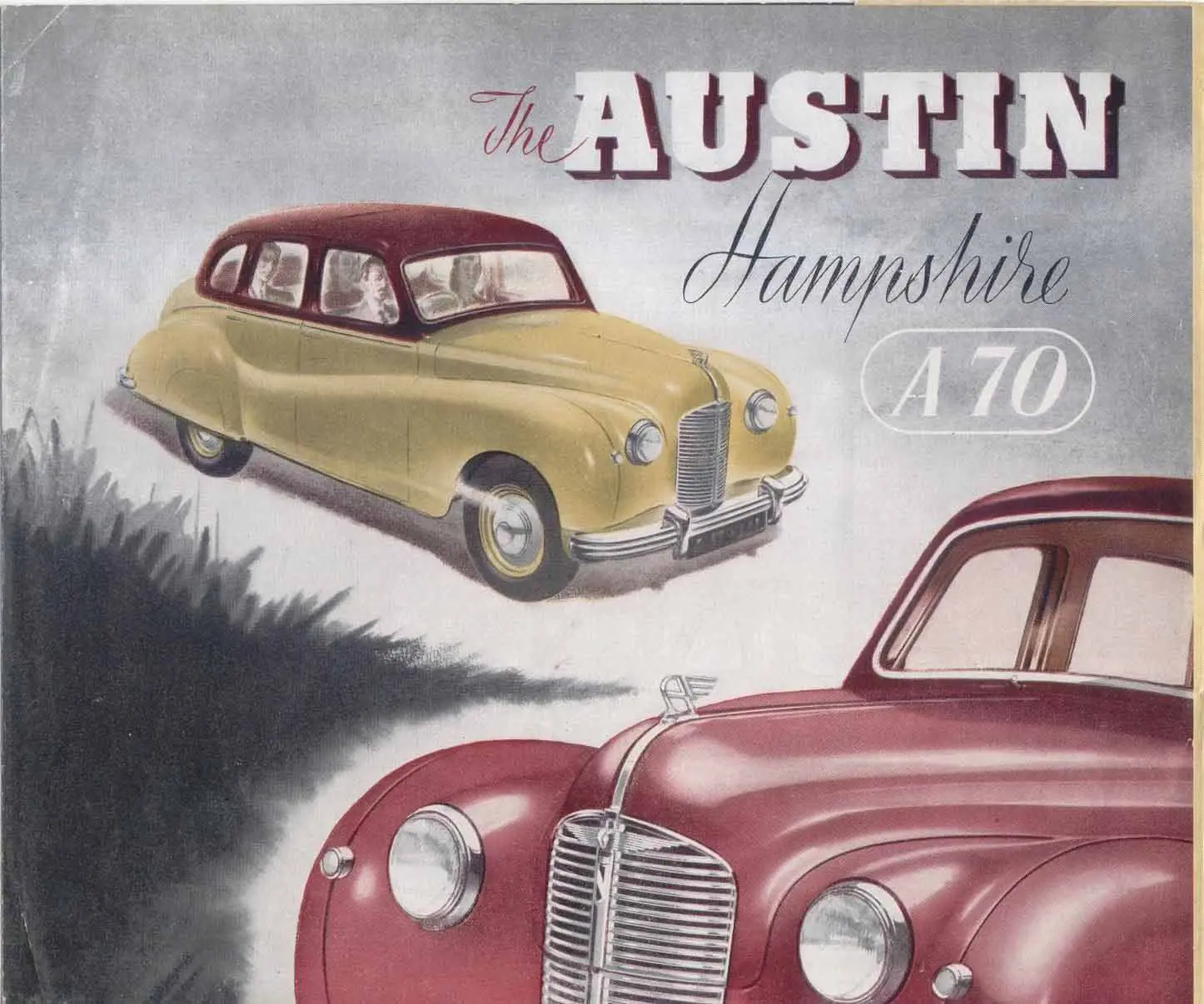The Austin A70 Hampshire; A Celebration
24 June 2022
One car I have long craved is the A70 Hampshire. Firstly, there is my abiding fascination with the immediate post-war era, as the Austin made its bow in October 1948 into a world of smog, Woodbines and black and white films starring Nigel Patrick. Secondly, there its name, as this writer hails from the county of Hampshire. And thirdly, it is a prime example of the British ‘Big Four’ saloon.
The A70 was based on the smaller A40 Devon, Austin’s first medium-sized family car after World War II; the two models shared the same doors. Power was from the 2,199cc engine from the outgoing Sixteen, and the lucky customer could enjoy the luxury of a heater and leather upholstery for their: £648.11s 8d. One rather nice touch was the tool kit concealed within the boot lid.

The Austin’s colour choices were distinctly Atlee-era – ‘Pueblo Brown’, black or beige – and the Hampshire’s top speed was 83 mph. However, with hydro-mech brakes, it was probably unwise to hurry along the A34. But your dealer would probably tell you that the company evaluated a prototype on a 5,000-mile journey to Norway and back to the West Midlands. In other words, here was a worthy alternative to the Standard Vanguard.
By January 1950, you could also buy a timber-framed A70 Countryman station wagon courtesy of Papworth Industries of Cambridge and nine months later, the Hereford succeeded the Hampshire. That year’s London Motor Show also marked the debut of the car that precipitated the eventual demise of the ‘Big Four’ – the Zephyr-Six.
Of course, periodisation is not rigid and so the advent of the new Ford did not cause denizens of Longbridge to tear at their hair, shouting “Jolly crikey! We’re doomed!”. What it did achieve was alerting drivers to the possibilities of ‘small six’ motoring. By 1954 the Hereford was replaced by the 2.6-litre S6 powered A90 Westminster, and six years later, even the Vanguard had gained two extra cylinders.
The traditional RWD four-cylinder large saloon was not entirely extinct by the early sixties. Rootes made the Humber Hawk until 1967, and eleven years later, Vauxhall unveiled the Carlton Mk, I. By then the market focus had been on six-cylinder cars for a long time, which makes any A70 Hampshire an intriguing machine. They definitely hail from a time before motorways and when ‘the ton’ was an impossible dream for many a saloon owner. And when Longbridge works looked like this.
